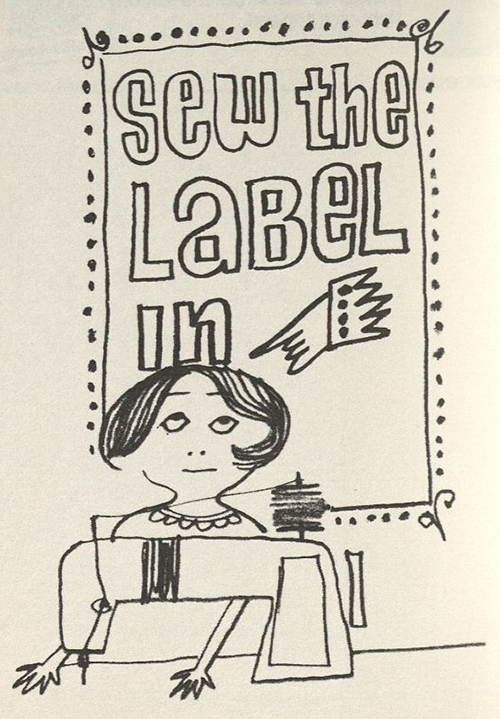International Ladies’ Garment Workers’ Union (ILGWU)
September 02, 2025
 Special Collections and Archives holds the papers of many labor unions. The records of one, the International Ladies’ Garment Workers’ Union (ILGWU), can be found in several collections, including the Los Angeles County Federation of Labor collection, the Rodolfo F. Acuña collection, and the International Longshoremen's and Warehousemen's Union (ILWU), Local 13 Records Part II. The ILGWU is featured in several publications in Special Collections and Archives, as well. Since its creation, the Ladies’ Garment Workers Union has navigated strikes, political advocacy, challenging negotiations, and more.
Special Collections and Archives holds the papers of many labor unions. The records of one, the International Ladies’ Garment Workers’ Union (ILGWU), can be found in several collections, including the Los Angeles County Federation of Labor collection, the Rodolfo F. Acuña collection, and the International Longshoremen's and Warehousemen's Union (ILWU), Local 13 Records Part II. The ILGWU is featured in several publications in Special Collections and Archives, as well. Since its creation, the Ladies’ Garment Workers Union has navigated strikes, political advocacy, challenging negotiations, and more.
In The Female Experience: An American Documentary, the author details various accounts of the expectations of women in the 19th century, when women were typically expected to assume domestic responsibilities within their families. Despite this perception, many women did enter the workforce during the 19th and early 20th centuries, often at accelerated rates in wartimes. Perhaps because women were assumed to be providing supplementary income for their families rather than being primary breadwinners in this era, financial compensation for their work lagged well behind that of men. For women of color, compensation was often even lower.
Industries that relied on women’s labor specifically, including the textile industry in the 19th century, often grievously exploited their workers’ labor well beyond low rates of pay. Women who worked in the 19th century were typically contracted to work 16-18 hour days, and were often at serious threat of injury from the machines they were required to use to complete their work, among other challenges.
Unions are usually formed to protect the rights and interests of workers in a specific industry. In this environment, workers organized the ILGWU to levy the power of numbers in securing such concessions as more reasonable work schedules, a minimum wage, and safer working conditions. While progress was gradual, many resolutions and requests for better conditions were passed over the years, as seen in many of the documents from our collections, continuing into the 20th century as the fight for better wages, better working conditions, and the demand for exploitation-free workplaces continued.
In 1948 the Education Department of the ILGWU published the Handbook of Trade Union Methods, which shares the ILGWU’s history. It goes on to explain the various reasons one might join the union; how to go on strike; differences and challenges when it comes to sex, age, and race; and other pertinent information for those interested in learning more about the ILGWU.
In the 20th century, the ILGWU became affiliated with the Los Angeles County Federation of Labor, a mutual aid organization and council for labor unions, further levying the power of workers across many industries. Although the ILGWU was one of the largest labor unions in the US at its peak, and one of the first to have a primarily female membership, it merged with the Amalgamated Clothing and Textile Workers Union in the 1990s and is no longer active. The history of the ILGWU, however, shows historic intersectional challenges in the labor workforce between women, men, children, race, and more.
Image Gallery
Post tagged as: urban archives, united states, archives, publications
Read more Peek in the Stacks blog entries
















